Do you know the disappointment at the dentist when you hear that the doctor cannot solve your problem on his own? You expect the problem to be solved here and now, but instead you get a voluminous plan that includes many consultations, diagnostic procedures and visits to different doctors. You asked for help specifically to the “dentist”, and the treatment involves the involvement of the “therapist”, “orthodontist”, “orthopedist” and other specialists. Don't be quick to get angry or upset. Let's consider why the integrated approach deserves much more attention than it is given in many dental clinics.

Today, an integrated approach in dentistry is a style of work in which a whole team of doctors takes part in the diagnostic manipulations and treatment of the patient. In some cases, even non-dental specialists, such as an osteopath, may be involved in the process to obtain the maximum result. This does not mean that every patient requires complex treatment. However, at the diagnostic stage, this is a non-alternative method: until each specialist evaluates the clinical situation in relation to his profile, it is very difficult to plan and create specific treatment regimens.
Let's take an example. The patient went to the doctor with a request for aesthetics. He was examined by an orthopedist, surgeon, orthodontist, but the therapist did not look. In this case, doctors objectively and with high accuracy cannot assess the complex of the patient's problems. Incompletely carried out diagnosis leads to deliberately erroneous treatment. Each doctor, based on the results of the collected data, gives his expert opinion, after which a team of specialists is formed to work on this clinical situation.
The penetration of an integrated approach into clinics is becoming more active. The reasons for its spread are associated, first of all, with the emergence of new opportunities in modern medicine. There is a development towards a broader view of the human body as a whole. And this applies not only to dentistry. Previously, general practitioners often did not cooperate with each other and were focused on solving problems that lay specifically in their field. Now a cardiologist, for example, can ask a question about the presence of endocrine pathologies in a patient, synthesize the data obtained and build a treatment based on them.
A similar thing happens in dentistry: the dentoalveolar system is not just a single tooth. It includes a complex of organs and tissues – the periodontium surrounding the tooth, bone tissue, mucous membranes, epithelium, capillary beds that provide blood supply, innervation systems. In the organ system, in addition to the tooth, there is the upper respiratory tract, the gastrointestinal tract, next to it there are auditory and visual analyzers, air sinuses, which provide a certain air exchange. Thus, many specializations overlap within dentistry. And if in the past it was believed that one dentist can solve all problems at once, now medical experts want to see the solution to each problem deeper. Of course, in this case, one doctor cannot cope, and the clinical team is expanding. In addition, the amount of information available to the physician during the diagnostic process is increasing due to rapid and comprehensive scientific and technological progress. This, of course, helps to more clearly understand the clinical picture and jointly plan the treatment of the patient.
The process of passing diagnostic procedures within the framework of an integrated approach is as follows. The patient comes with a specific request related to the dentoalveolar system. Doctors understand that the situation should be assessed by a specialist of each profile. So that the patient does not waste time going through 4-5 consultations, during the initial visit to the clinic, all the necessary information is collected. The medical community is committed to a common protocol for collecting data so that it is highly standardized and available for use by any physician.
- The patient must undergo computed tomography, a picture that shows the condition of bone tissues, hard tissues of the teeth, the condition of the jaw bones, sinuses, sinuses of the upper jaw, that is, the primary diagnosis.
- Next, a scan takes place, as a result of which a 3D- model of the patient's teeth. On it you can see a single tooth or a group of teeth, as well as closures.
- The doctor must take photographs to see what aesthetic flaws the patient has. Since the photos were taken from several angles, they can be evaluated by a doctor of any profile and interpret the data in their own way.
Thus, the collection of primary diagnostic data is the task of the doctor to whom the patient has registered for the first time. All other specialists have the opportunity to remotely view and get acquainted with the primary clinical picture and realize an integrated approach to the treatment of this patient.
Even though a team of physicians from different specialties is involved in drawing up a treatment plan, planning is an orthopedic task, and it is the orthopedic physician who is responsible for the comprehensive plan. The period from the initial consultation to the preparation of a full plan usually takes 1.5 hours, but may require additional time to clarify the details.
Drafting a treatment regimen is based on the question, request or wish of the patient. Often there is a situation when a patient comes with one brightly exciting question, but which implies the solution of a whole range of problems. Therefore, after drawing up the ideal treatment regimen, a meeting is scheduled with the patient to discuss the plan and agree on the details.
A holistic approach is not only meetings where patients are present. It is implemented, among other things, in the form of regular interdisciplinary meetings, where difficult clinical situations are presented, and doctors try to discuss them together. Everyone voices their opinion and vision, as a result of which the team comes to a single treatment concept agreed with all leading specialists. Some clinics have curators who help in organizational terms, if the clinical case is of medium complexity. They create general chats for doctors to interact, where they collect important information, organize personal meetings of specialists, helping to discuss the clinical situation.
As a general rule, for a process to be considered complex, two or more physicians must be involved in the treatment of a patient. However, in practice, patients who need the help of only two specialists to achieve a healthy and aesthetic smile are very rare. For example, if an adult patient has a bite pathology, then he has been living with this problem for a certain time. Accordingly, abrasion appears, which makes it possible to attribute this case to the orthopedic group. If you do not correct the anatomy of the teeth changed due to bite pathologies, this can lead to consequences in the form of a relapse of orthodontic treatment, as well as the appearance and development of other orthopedic problems. So, most often in practice, 3 doctors or more are involved in the treatment of complex cases.
Sometimes patients are afraid of the duration of treatment. However, thanks to digitalization, many processes in medicine are accelerated, the solution of issues is simplified, so it is possible to reduce the treatment time. To do this, doctors often add surgical preparation steps directly to the orthodontic treatment steps. For example, during treatment with braces, surgeons put implants on a patient, perform bone grafting, and orthopedists try to create temporary structures in areas of missing teeth. Now this has become possible thanks to the methods of digital laboratory support. All such details must be agreed with the doctors and laid down in a comprehensive plan.
If the patient is prepared orthodontically, has undergone therapeutic sanitation and surgical treatment, then his prosthetics can take from 2 to 7 months. Terms are individual and depend on the specific clinical situation.
Clinical case
Let's consider how an integrated approach to treatment is implemented using the clinical case of the Confidentiality team as an example.
The patient complained of uneven teeth, improper closing of the teeth in front.
Photo protocol at the initial consultation
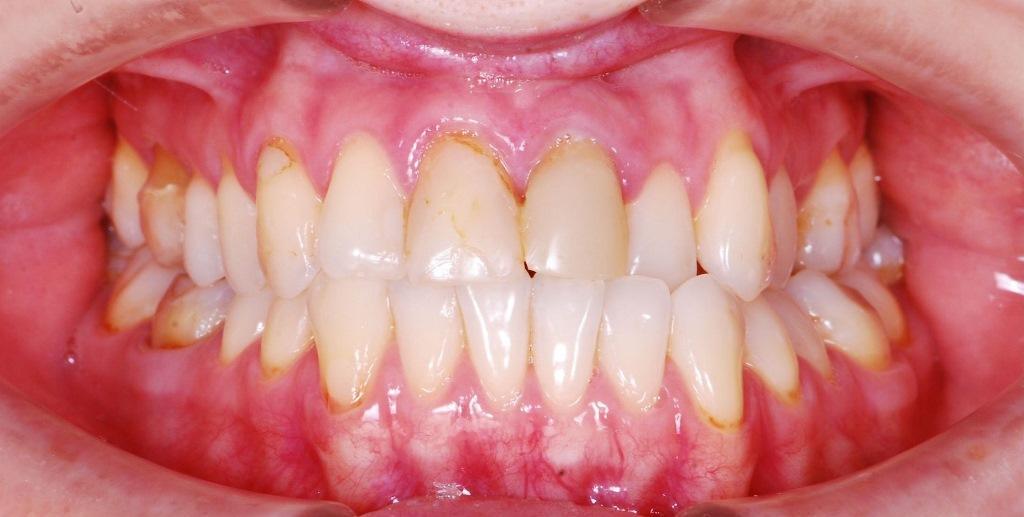
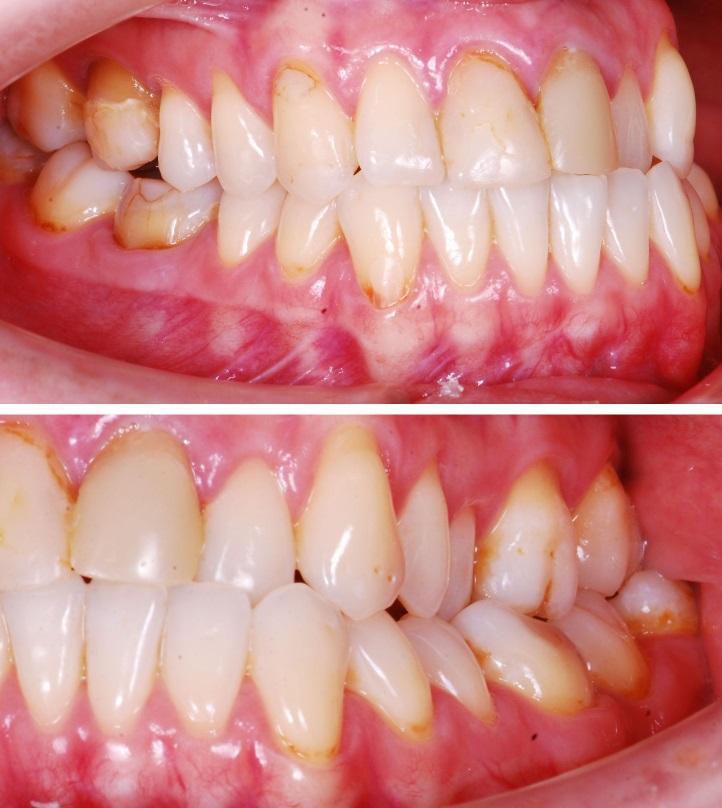
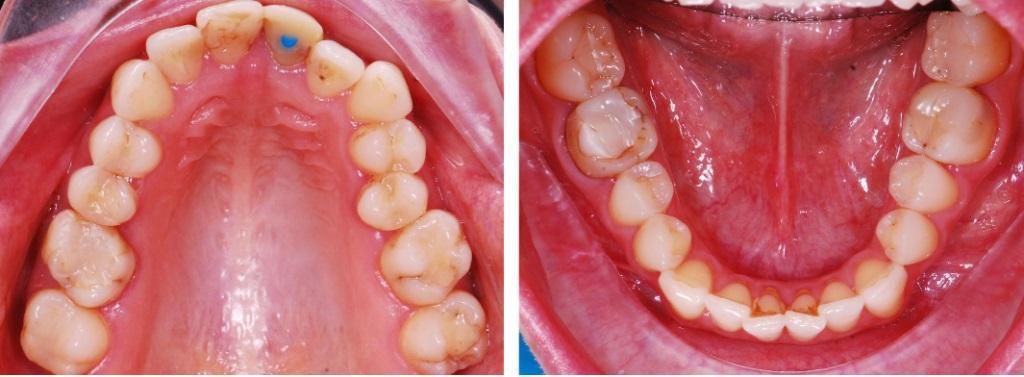
Therapeutic sanitation as preparation has begun to orthodontics.
After undergoing treatment by a therapist, the orthopedist installed temporary crowns on severely damaged teeth to preserve their integrity during orthodontic treatment. For the manufacture of crowns, laboratory material with composite inclusions was used. Because of this, temporary crowns can last a long time.
Next, the combined bracket system was fixed on both dentitions, the dentitions were separated by overlays on the second molars. Weak early elastics were prescribed for bite correction.
Fixing the bracket system
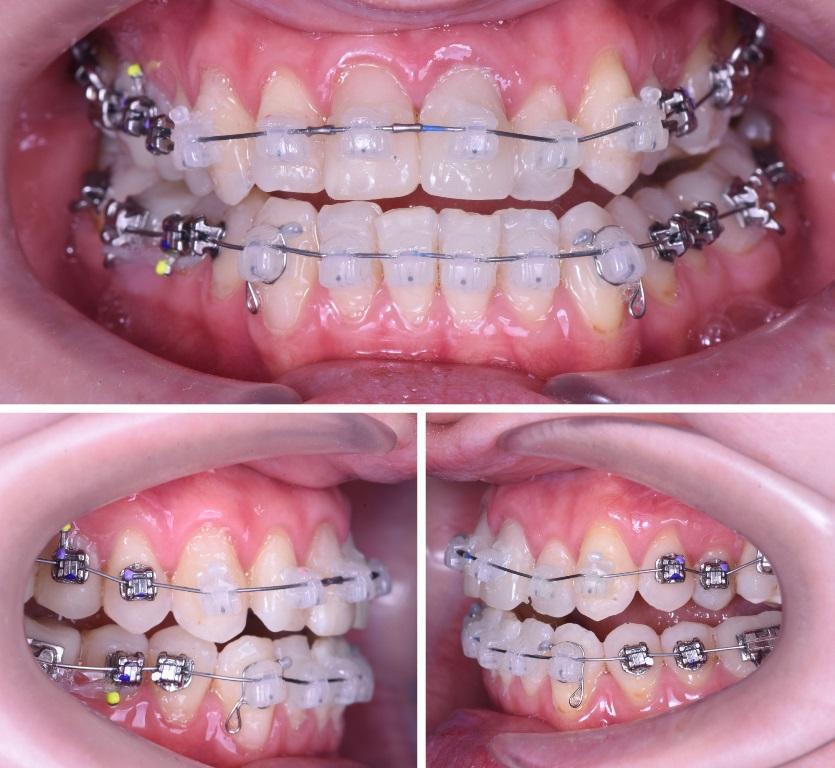
The period of orthodontic treatment was 12 months.
The result of orthodontic treatment

During the treatment period: < /p>
- Contacts improved
- Upper and lower arches aligned
- Correct overlap of upper and lower teeth created
- Upper arch expanded
li>
After orthodontic treatment, the surgeon prepared the soft tissues – multiple recessions were closed.
After stabilization of the level of soft tissues and the shape of the gingival margin, the orthopedist replaced temporary crowns with permanent ones, including those in the region of the central incisors of the upper dentition.
The result of the work of an orthopedist
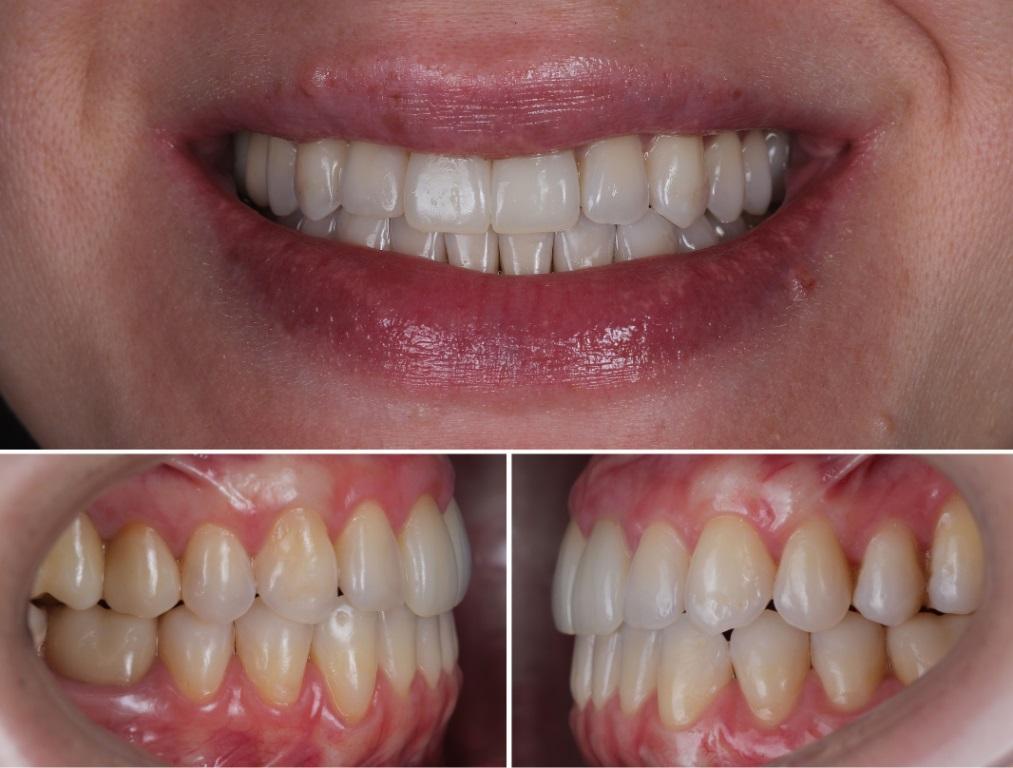
Thus, on the example of this clinical case, one can see the result of an integrated approach to treating a patient. It is important that only a slight correction with ceramic restorations was made, and not a complete covering of all teeth with veneers or crowns. We only emphasize your individuality.
Before and after complex treatment
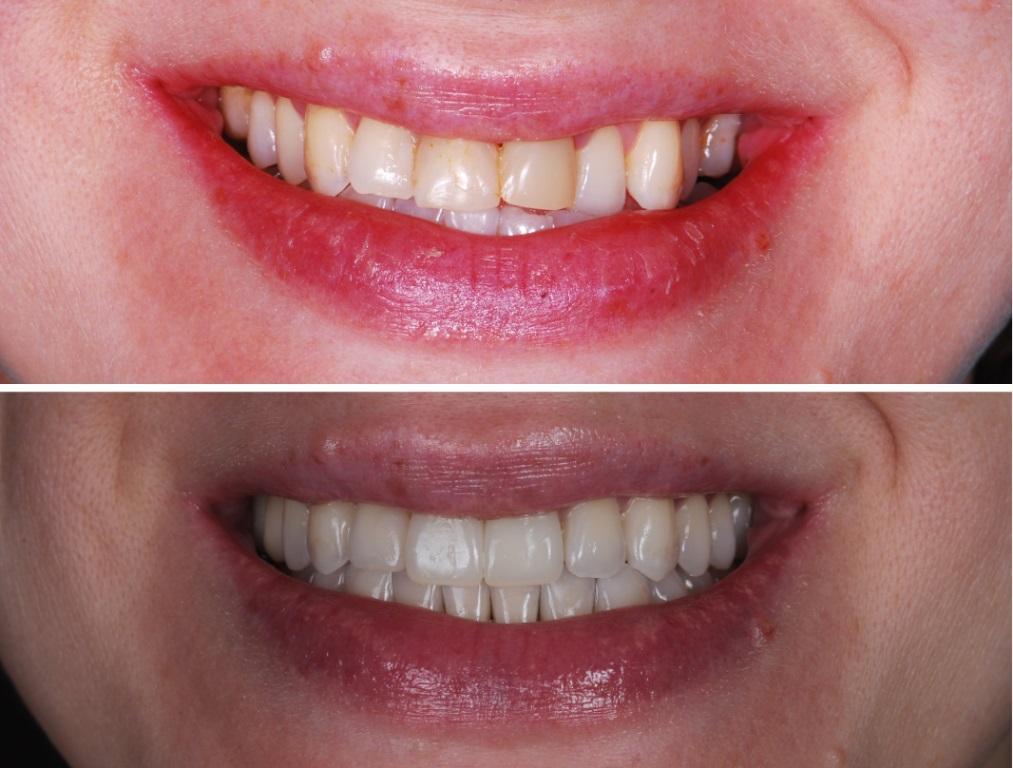
Conclusion
The development of an integrated approach in dentistry is associated with digitalization, the introduction of technologies that provide large amounts of input data. The more data that can be combined and analyzed, the better treatment the patient will receive. In addition, in order to differentiate the need to refer the patient to a particular doctor, one must understand this pathology and see it. The range of possibilities and the zone of erudition of doctors involved in such treatment is much wider than that of specialists who are limited only by their field.
The patient needs to understand that the expectations of the outcome of treatment are similar for all doctors. They go to the result from different sides, but have a common goal. That is why, from the point of view of the patient's health, complex treatment is the only right approach.
